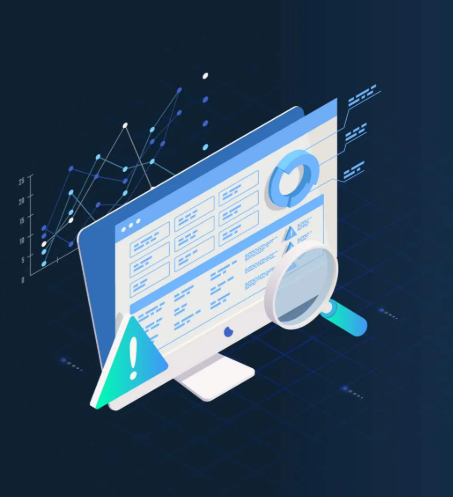Making Sense of Cyber Risk: A Practical Guide to Quantification
- 75 Views
- admin
- 10/27/2024
- Cybersecurity
The rapid growth of online business during the pandemic came with a hidden cost—an explosion in cyber threats. As more companies expanded their digital footprint, the landscape of risks changed dramatically. Security leaders are now under pressure to measure these threats effectively and present them in terms decision-makers can understand. That’s where cyber risk quantification (CRQ) comes into play.
Understanding Cyber Risk Quantification
At its core, cyber risk quantification is about translating potential risks into financial terms. Rather than relying on vague assessments, quantification brings clarity by attaching monetary value to cyber threats. This enables organizations to prioritize their security efforts, allocate resources effectively, and communicate risks clearly to stakeholders.
CRQ can enhance decision-making, help streamline security strategies, and provide direction during incidents. However, it also comes with its share of challenges.
The Hurdles of Quantification
Many companies are still in the early stages of understanding their cyber risks. A lack of standardized processes, limited visibility into threats, and uncertainty around data accuracy can make it difficult to produce reliable figures. Even with strong data and models, risk quantification always carries some level of uncertainty, particularly when dealing with unpredictable or emerging threats.
Despite these limitations, CRQ remains valuable. When done correctly, it improves transparency across the organization, boosts operational efficiency, and ensures resources are focused on the most pressing vulnerabilities.
Transparent vs. Opaque Approaches
There are two main types of CRQ methods: transparent (often called “glass-box”) and opaque (“black-box”). Transparent models, such as FAIR or Monte Carlo simulations, allow stakeholders to see how inputs are used and how outputs are derived. This transparency makes them especially useful in executive conversations, where trust in data is key.
In contrast, black-box models rely on hidden algorithms and produce results without offering insight into how they were calculated. While they can be quick and easy to use, they often lack the credibility needed for board-level discussions.
Choosing the Right Approach
Selecting a CRQ method depends on several factors: the organization’s maturity, available resources, tolerance for uncertainty, and access to historical data. Mature businesses may opt for advanced models like FAIR, while others might start with simpler approaches before scaling up.
Regardless of size or industry, every organization can benefit from some form of CRQ—what matters is finding the right fit.
Key Quantification Methods
1. FAIR (Factor Analysis of Information Risk)
FAIR is a leading standard in the field of risk quantification. It breaks risks into two measurable parts: how often a threat is likely to occur and how costly it could be. By offering a clear financial lens on cyber threats, FAIR bridges the gap between technical teams and business leaders.
It’s particularly useful for companies with mature security programs looking to align cybersecurity strategy with business goals. FAIR also complements other frameworks like NIST and ISO, making it a flexible addition to existing practices.
2. Monte Carlo Simulation
Monte Carlo analysis uses probability distributions to simulate different risk scenarios. By running multiple iterations, it helps organizations understand a range of possible outcomes and the likelihood of each. This method is particularly effective when dealing with uncertain or variable data.
3. Controls-Focused Assessments
Frameworks like NIST RMF, ISO 27001, and others offer structured approaches to evaluating security controls. These assessments can provide a foundation for identifying gaps, though they often fall short in quantifying the actual financial impact of risks.
Common pitfalls with control-based approaches include incomplete risk identification, poor alignment with business priorities, and a lack of risk awareness across non-technical teams.
4. Threat Analysis
Understanding the types of threats an organization faces is critical to risk management. Threat analysis focuses on identifying internal, external, accidental, and deliberate risks. This information helps tailor security responses and prepare for specific attack vectors.
However, successful threat analysis depends on identifying all relevant systems, assets, and access points—something many organizations struggle with. Without full visibility, critical risks can go unnoticed.
Putting It All Together
Effective cyber risk quantification helps companies identify their most significant risks, anticipate losses, and take preventive action. It also provides a common language for cybersecurity professionals and executives, improving communication and decision-making across the organization.
By adopting transparent, data-driven approaches like FAIR or Monte Carlo, and by understanding the strengths and limitations of other models, organizations can strengthen their security posture and make smarter investments in protection.
Recent Posts
- How AI is Revolutionizing Architectural Design: A Look at Tools, Trends, and the Future
- Streamlining Cyber Risk Assessments Through Automation
- Understanding the Difference Between Blockchain and Distributed Ledger Technology
- Is Bitcoin Mining Still a Viable Venture in 2025?
- Exploring AI: Unveiling Possibilities, Challenges, and Future Implications


